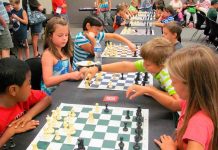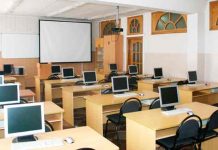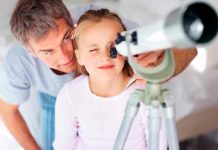Муниципальное общеобразовательное учреждение
«Песчанская средняя общеобразовательная школа»
Котласского района Архангельской области
Конспект урока по английскому языку
в 9 классе
Известные люди
подготовила
учитель английского языка
Болтинская Анна Анатольевна
Григорово
2012
Пояснительная записка
Урок по теме «Известные люди» разработан для проведения в 9 классе на основе учебно-методического комплекса под редакцией К.И.Кауфман, М.Ю.Кауфман «Счастливый английский. ру» и с использованием методических пособий по региональному компоненту:
— Методические рекомендации по курсу английского языка (региональный компонент) для средних общеобразовательных школ
— Сборник «Региональный компонент общего образования Архангельской области» Иностранный язык (английский, французский, немецкий).
Издательство «Департамент образования и науки Архангельской области, Архангельский областной институт переподготовки и повышения квалификации работников образования, Архангельск, 2006
— М.А.Амосова, Э.Э.Глущенко, Л.В.Рипинская «Поморы и их культурные традиции» факультативный курс для учащихся 10-11 классов с углубленным изучением английского языка.
Издательство Поморского международного педагогического университета имени М.В.Ломоносова, 1995
Урок направлен на развитие иноязычной коммуникативной компетенции в совокупности ее составляющих – речевой, языковой, социокультурной, компенсаторной, учебно-познавательной. В ходе уроке прослеживается межпредметная связь, развитие коммуникативных умений в четырех видах речевой деятельности (говорении, чтении, аудировании, письме).
Урок имеет также большое воспитательное значение. Воспитание гражданских и патриотических чувств проходит через материал о знаменитых людях России и англоязычных стран, которые известны во всем мире; и подводится к мысли, что человек может быть известен только в определенной местности, среди определенных людей. А каждый ученик класса – это личность, и он/она тоже знаменит, но только в своем классе, школе или среди какой-то группы людей. Чтобы дать возможность ученику заявить о себе, что он личность, на уроке используются различные методы и приемы, например разноуровневые задания, дифференцированный подход, подготовленное домашнее задание (монологическое или диалогическое высказывание).
Проект урока
английского языка
Тема урока: «Известные люди»
Класс: 9
-
Характеристика класса
Класс базового уровня образования. Уровень коммуникативной культуры и уровень сформированности учебных умений и навыков достаточный.
-
Характеристика темы
Данный урок является уроком развития коммуникативных навыков и умений на использовании страноведческого материала (Россия, США, Великобритания), а также на материале регионального компонента. Учащиеся учатся пользоваться лексикой по теме, употреблять разговорные фразы, строить грамматически правильные предложения.
-
Система целей урока
Общеобразовательный аспект: совершенствовать и углублять знания учащихся по теме и моделировать речевое общение с использованием лексики темы, развивать навыки и умения в диалогической и монологической речи, в чтении с применением различных стратегий чтения, в аудировании и письме.
Развивающий аспект: формирование учебной деятельности учащихся (целеполагание, умение адекватно оценивать результаты своего труда), расширение знаний по страноведению и региональному компоненту, развитие воображения, памяти, мыщления на языке.
Воспитательный аспект: воспитание культуры общения, умение уважать и выслушивать мнение других, воспитание любви и уважения к Родине, странам изучаемого языка, родному краю; людям, живущим там, своим одноклассникам.
-
Тип урока: закрепление и применение полученных знаний.
-
Формы организации познавательной деятельности:
— групповая.
— индивидуальная,
— парная.
6. Методы обучения:
— проблемный,
— деятельностный,
— репродуктивный,
— самостоятельная поисково–исследовательская
деятельность.
-
Формы реализации методов:
— беседа,
— самостоятельная работа,
— творческие задания.
8. Средства обучения:
— картинки с изображением флагов России, США и
Великобритании,
— портреты М,В.Ломоносова, В.Шекспира, М.Фарадея,
— иллюстрации по теме М.В.Ломоносов,
— раздаточный материал с текстами для чтения, тестами и
кроссвордами,
— компьютер,
— экран,
— презентация класса,
— презентация «Известные люди»,
— аудиозаписи песен”Say Hello”, “How do you do?”
— Чайковский П. И. «Времена года»
9. Система контроля на уроке:
— сочетание контроля учителя, самоконтроля и взаимоконтроля
на всех этапах урока.
10. Структура урока:
| Дидактические цели | |
| 1.Организация начала урока. | Подготовка учащихся к уроку.
|
| 2. Создание проблемной ситуации. | Обеспечение мотивации и перехода непосредственно к теме. |
| 3.Известные люди США: — выполнение теста на проверку домашнего задания. |
Определение уровня усвоения материала. |
| 4. Известные люди Великобритании: — выполнение упражнения на соотношение имен известных людей и их портретов; — практика в монологическом высказывании (М. Фарадей); — работа с текстом «Вильям Шекспир»: Чтение текста и ответы на вопросы по содержанию текста
|
Осмысление изученного материала, применение его на практике.
Применение на практике стратегии поискового, просмотрового чтения. |
| 5.Релаксация | Снятие напряжения. |
| 6.Известные люди России: — самостоятельная работа (разгадывание кроссворда, нахождение соответствия имени человека и его описания) — мини-конференция «Михаил Васильевич Ломоносов – наш земляк» — викторина о Ломоносове — работа с текстом о Ломоносове |
Осмысление изученного материала на других предметах, применение его на практике.
Применение на практике знаний, умений и навыков монологической речи. Применение на практике стратегии чтения с полным пониманием прочитанного, использование лексики. |
| 7.Известные люди рядом: — диалог
-творческая работа: презентация группового проекта «Наш класс» |
Применение на практике знаний, умение вести диалог, использовать в речи разговорные фразы. Применение знаний на практике. Снятие напряжения. |
| 8.Домашнее задание: продолжить рассказ по данному началу. |
|
| 9.Подведение итогов урока. | Анализ и оценка успешности достижения целей, релаксация. |
Ход урока:
-
Организационный момент.
Исполнение песенок “Say Hello”, “How do you do?”
-
Создание проблемной ситуации.
Teacher: I am very glad to see you. How are you? Are you OK?
So the theme of our lesson is “Famous People”.
Famous people… What does it mean?
Student 1: I think that a famous man is a man who is known by everybody.
Student 2: I have found out the meaning of the word “famous” in the “Oxford Student’s Dictionary of Current English”. The author of this dictionary is A.S.Hornby, the famous English linguist. So “famous” means known widely; having fame.
The word “famous” also has some synonyms:
Well-known – known by many
Outstanding – in a position to be easily noticed; attracting attention (because so good); successful.
( просмотр нужных слайдов презентации «Известные люди»)
Student 3: I suppose we’ll get some information about famous people of Russia, Great Britain and the USA.
Teacher: Why do you think so?
Student 4: I think so because there are flags of these countries on the blackboard.
Teacher: Yes, you are right. You know every country has its own famous people. Much was done by these people to reach the present state of human development. They made something very important and useful in different spheres of life, e.g. in literature, art, science, policy and so on. We have already read and spoken about well-known Americans George Washington and Thomas Jefferson. And today at the lesson we’ll know more about outstanding people of Great Britain and Russia. But first of all let’s remember about famous Americans.
3.Известные люди США. (Выполнение теста на проверку домашнего задания.)
Test “Famous Americans”
Please, read and match the correct answers.
-
Who was the first president of the USA?
-
Abraham Lincoln
-
Thomas Jefferson
-
George Washington
-
Who was the writer of the Declaration of Independence which declared American independence from Great Britain?
-
George Washington
-
Thomas Jefferson
-
Franklin D. Roosevelt?
-
Who was the first man on the Moon?
-
Yury Gagarin
-
Valentina Tereshkova
-
Neil Armstrong
-
Who chose the place for American capital?
-
George Washington
-
Neil Armstrong
-
Walt Disney
-
Whose portraits are printed on American dollars?
-
Portraits of American writers
-
Portraits of American presidents
-
Portraits of American scientists
-
Who created “The Adventures of Tom Sawyer”?
-
Mark Twain
-
William Shakespeare
-
Jack London
-
Who built the first car?
-
Isaak Newton
-
Henry Ford
-
Thomas Alva Edison
-
Who was the “king” of rock’n’roll?
-
Arnold Schwarzenegger
-
Henry Ford
-
Elvis Presley
-
Disneyland is a large park for children in California in the USA created by the famous American film producer … in 1955.
-
Walt Disney
-
Elvis Presley
-
Charlie Chaplin
-
Who discovered America on October, 12, 1492?
-
Amerigo Vespucci
-
Christopher Columbus
(Keys: 1 – c, 2 – b, 3 – c, 4 – a, 5 – b, 6 – a, 7 – b, 8 – c, 9 – a, 10 – b)
-
Известные люди Великобритании:
Teacher: We have remembered about some well-known Americans. Well done. We know Great Britain is also famous for its people. It is necessary to point out that great contribution to the development of the world of science, literature, art, culture, music was made by English.
Task 1:
What famous English do you know?
Students: Margaret Thatcher, Michael Faraday, Isaak Newton, William Shakespeare, Robert Burns, etc.)
Teacher: Let’s match the famous people and their names.
(На доске портреты известных людей и их имена.)
Task 2:
Teacher: Students, let’s remember some facts from the biography of one of the famous English.
Student: I want to tell you about Michael Faraday. Michael Faraday, one of the famous English scientists was born in a poor family. He didn’t learn much and spent a lot of time playing in the street. When he was 14 he got some work in the bookseller’s shop. So Michael could read books. The young boy read a book written by Humphry Davy, English greatest scientist of that time. He liked it so much that he tried to get work in Davy’s laboratory. Soon Faraday became Davy’s laboratory assistant. Like Davy he became interesting in electricity. Michael discovered that electricity could be made by a machine. Nowadays we can say without Faraday and his work we can have no electricity and of course we can have no telephones, no radio, no television.
Task 3:
Teacher: Whose portrait is this?
Student: It is William Shakespeare.
Teacher: Now let’s read the text about William Shakespeare and answer the questions.
William Shakespeare
(1564 – 1616)
William Shakespeare is one of the greatest and the most famous writers in the world. He was born in 1564 in Stratford-on-Avon. It was a small English town. His father wanted his son to be an educated person and William was sent to the local grammar school. When, as a boy, he studied at school, he had no time. When he had a break William liked to go to the forest and to the river Avon.
At that time actors and actresses visited Stratford-on-Avon. William liked to watch them. He was fond of their profession and he decided to become an actor.
Young Shakespeare went to London. There he became an actor. He began to write plays too. Shakespeare was both an actor and a playwright. In his works Shakespeare describes the most important and dramatic events in life. His plays were staged in many theaters, translated into many languages and they made Shakespeare a very popular man.
The writer’s most famous plays are “Othello”, “King Lear”, “Hamlet” and “Romeo and Juliet”.
He wrote 37 plays. He was connected with the best theaters in England for 25 years.
William Shakespeare wrote a lot of poetry. His poems have been published in many languages. They are well-known. We don’t know a lot of facts about Shakespeare’s life. We can only guess what kind of man he was, that’s why there are a lot of legends about his life.
William Shakespeare died in 1616. His plays are still popular and millions of people admire them.
poetry – поэзия
to admire – восхищаться чем-либо
playwright – драматург
Questions
-
Is Shakespeare one of the greatest and the most famous writers in the world?
-
Where was he born?
-
Where did William study?
-
What did he like to do when he was a little boy?
-
What did William Shakespeare work as?
-
What plays by Shakespeare do you know?
-
How many plays did he write?
-
Are there any interesting facts about the poet’s life?
-
Have you read anything written by Shakespeare?
(Ученики читают текст самостоятельно, а затем отвечают на вопросы: P1- P2, P2 – P3, P3 – P4 т.д.)
-
Комплексная релаксация.
На фоне музыки Чайковского П. И. «Времена года» звучат слова:
“Sit comfortably. Close your eyes.
Breathe in, breath out.
Let’s pretend it’s summer. You are lying on the sand at the seaside. The weather is fine. A light wind is blowing from the sea. The birds are singing. Your brain rests. You are quiet in your body.
Nothing diverts your attention. You are relaxing. Your troubles are far away.
You love your parents, relatives, school and friends. They love you, too/ Learn to be happy at every pleasant thing. The Earth is full of wonders. You are able to do everything. You are sure in yourself, with much energy. You have good spirits.
Open your eyes. How are you?
-
Известные люди России.
Teacher: We can’t name all famous people of Great Britain. But now let’s remember about our country. It is necessary to say that great contribution to the development of the world science, culture, literature, music was made by the Russian people. The names of Russian scientists, writers, poets, composers, painters are world-famous.
Task 1: Your task will be to find names of 10 Russian outstanding people in this crossword. Then match the names and the definitions of these people. Work in pairs.
-
He was born in the Arkhangelsk Region. The Moscow University was named after him.
-
He was a founder of Periodic System of Elements.
-
He was the world’s greatest physiologist. He made experiments with dogs.
-
On April 12, 1961, he flew into space for the first time in history. He spent 108 minutes there.
-
He is the president of Russia now.
-
He wrote a lot of poems e.g. “Ruslan and Lyudmila”, “Evgeny Onegin”, etc.
-
He was born in our district. During and after the Great Patriotic War he was the Commander-in-Chief of the Navy. One of the streets in Kotlas is named after him.
-
You are reading his famous novel now. The main heroes are Chichikov, Sobakevich, Danilova, Plyushkin, Korobochka.
-
She was the first woman cosmonaut.
-
He was born in the Arkhangelsk Region. He wrote a lot of fairy-tales. The main hero of his works is Senya Malina.
-
P
K
U
Z
N
E
T
S
O
V
U
X
Y
Q
G
O
G
O
L
T
S
N
M
T
A
J
F
I
P
E
H
Q
D
O
G
L
W
U
A
R
K
P
I
S
A
K
H
O
V
E
I
J
J
B
R
A
Q
Y
L
S
N
P
U
T
I
N
C
R
O
H
L
O
M
O
N
O
S
O
V
K
M
E
N
D
E
L
E
E
V
O
Z
W
B
G
I
Z
L
B
D
V
Q
S
V
H
P
X
V
Q
X
A
Task: Teacher: Every country has its own customs and its own traditions and of course its own famous people. I think all people in Russia especially in the Arkhangelsk Region are proud of M. V. Lomonosov, our compatriot. I’m sure you are ready for today’s lesson. We’ll have some kind of mini-conference. Lena will help me. She’ll be the head of our activity. Do you agree, Lena?
Lena: Yes, I do. Let me declare our mini-conference. The subject of our conference is “Michail Vasilyevich Lomonosov is Our Compatriot”. The plan is
-
M. V. Lomonosov’s childhood.
-
M. V. Lomonosov’s youth.
-
M. V. Lomonosov – a patriot of Russian science.
-
Keeping Lomonosov’s memory:
-
The monuments to M. V. Lomonosov
-
The birthplace of Lomonosov
-
Places bearing the name of Lomonosov
The first report is presented by Lyuda.
The subject of my report is Lomonosov’s childhood.
As you know the name of M.V.Lomonosov is known to everybody in the world. He is the greatest Russian scientist and poet. And of course you know that he was born not far from Arkhangelsk and spent his childhood there.
His father was a peasant and a fisherman. He could neither read nor write, but he was the best fisherman in the village. He was famous for making boats. Lomonosov’s mother was a very kind woman. She died when Mikhail was only 8.
Lomonosov was born in 1711 in the village of Denisovka near Kholmogory, Arkhangelsk Gubernia. When Lomonosov was a little boy he liked to play with other children: they ran, played games, skied and swam in the river in summer. He knew a lot of trees, birds and animals and liked nature very much.
When Mikhail was 8 his father began to take him to the White Sea to fish. It was very difficult. A cold strong wind was blowing and the sea was often stormy and full of ice.
Mikhail wanted to study but it was impossible: there was no school in their village. So he began to read and write through church books. He was also lucky to get three very good books from their neighbour. They were Melenty Smirnitsky’s Grammer, Leonty Magnitsky’s Arithmetic and Simeon Polotsky’s Psalter in Rhymes. He called these books as “gates of learning”.
But he wanted to get more knowledge. So in 1730 Mikhail took a bag and went to the capital on foot. In three weeks he was in Moscow.
The report to follow will be given by Tanya.
The subject of my report is Lomonosov’s youth.
In fact at the age of 19 Lomonosov was in Moscow. He entered the Slavonic-Greek- Latin Academy. The Academy was closed to peasants. Lomonosov pretended of noble birth. He studied Latin here and soon he was good at Latin. But the life of young Lomonosov was very difficult. He had a scholarship of three kopecks a day. He was a brilliant student and in 1736 he returned to St. Petersburg. Four years later he was elected a member of the Academy.
Let me give the floor to Misha.
I want to begin my report with the words of A. Pushkin “Lomonosov was a great man… He founded the first Russian university; or to express it more correctly he himself was our first university.” He fought for Russian science.
M.V.Lomonosov made a lot of discoveries in different fields of science: physics and chemistry, mining and metallurgy, astronomy and navigation. In most of them he was ahead of his time. He formulated the law of conservation of matter.
Lomonosov was interested not only in exact sciences but in humanities too. He was the founder of the Russian materialistic philosophy, the author of the first Russian Grammar. We know that M.V.Lomonosov was a poet. V.G.Belinsky wrote, “Our literature begins with Lomonosov; he was its father and mother, he was its Peter the Great”.
Tolik will report on the topic about the monuments to Lomonosov.
M.V.Lomonosov is widely known in Russia and in the Arkhangelsk Region in particular.
Moscow University was named after its founder and there are monuments in Moscow, St. Petersburg, Severodvinsk, in Koryazhma and in his native village Lomonosovo. The State University, the theatre, the town library and a prospect in Arkhangelsk are named after Lomonosov.
Every year scientific Lomonosov Readings are held in Arkhangelsk.
The subject of Masha’s report is the birthplace of M. V. Lomonosov.
There is Lomonosov’s house-museum in the village of Lomonosovo. It was opened in 1940. Museum exhibits tell the visitors about different periods of life and work of Lomonosov. In one of the rooms a visitor can see production of the local bone-carving factory named after M.V.Lomonosov.
The last report is presented by Denis.
Lomonosov’s name is famous all over the world. Look at the map of the world. The stream in the Atlantic Ocean, a group of mountains on Novaya Zemlya, a plateau in Greenland, an underwater mountain in the Arctic Ocean and even a crater on the moon were named after him.
Lena: Our work is drawing to a close.
In closing I’d like to thank all of you for your participation in this conference.
Task 3: Teacher: You’ve just got some information about Lomonosov. So let’s do quiz.
Questions
-
What books did Lomonosov called the gate of his learning?
-
What Russian poet called Lomonosov “our first university”?
-
Who said “Our literature begins with Lomonosov. He was its father and its mother, he was its Peter the Great”?
-
When was Moscow University founded?
5. In Russia there are two museums of Lomonosov. Where are they?
6.What is the title of N.Nekrasov’s poem in which there are words about
M.V.Lomonosov? Recite the stanza.
7. Where was Lomonosov buried?
Keys:
-
“Grammar” by M. Smirnitsky and “Arithmetic”by L. Magnitsky
-
A.S.Pushkin
-
V.G.Belinsky
-
1755
-
St.Petersburg, the village of Lomonosovo
-
«Школьник»
Скоро сам узнаешь в школе,
Как архангельский мужик
По своей и божьей воле
Стал разумен и велик.
-
St.Petersburg, Alexandro—Nevskaya Lavra
Task 4: Students, let’s read the text about M. V. Lomonosov. The task is different for different students.
(Ученикам выдаются тексты с заданиями разного уровня сложности:
-
Текст разрезан на 5 частей. Надо составить текст в логической последовательности.
-
Текст разрезан на 5 частей. Надо составить текст в логической последовательности. Вставить пропущенные слова.
-
Текст разрезан на части. Надо составить текст в логической последовательности. Вставить пропущенные слова из списка предложенных слов. 3 слова лишних.
-
Текст разрезан на предложения. Надо составить текст в логической последовательности. Вставить пропущенные слова из списка предложенных слов. 3 слова лишних.)
1.The text is divided into 5 parts. Put them in the right order, please.
Mikhail Vasilievich Lomonosov
——————————————————————————————————
Every year, on the 19th of November, we celebrate M. V. Lomonosov’s birthday. He is known as the father of Russian science, an outstanding poet, founder of Russian literature and creator of the Russian language.
——————————————————————————————————
M. V. Lomonosov was born in a fisherman’s family, in the village near Kholmogory. When he was 19, he went on foot to Moscow where he entered the Slavonic-Greek-Latin Academy. He was a brilliant student and in 1736 he was sent to study chemistry and metallurgy.
——————————————————————————————————-
While abroad Lomonosov studied philosophy, physics, mathematics and foreign languages. In 1742 he returned to St. Petersburgh and 4years later he was a full member of the Academy. M. V. Lomonosov fought for Russian science. In1755 he founded the first Russian University in Moscow.
——————————————————————————————————-
M.V. Lomonosov is widely known in the whole of Russia and in the Arkhangelsk Region in particular. Moscow University was named after its founder. There are monuments to him in Moscow, St. Petersburg, Koryazhma and in his native village of Lomonosovo.
——————————————————————————————————-
Every year scientific Lomonosov Readings are held in Arkhangelsk. Scholars from the best-known research centres of the country come to take part in them. M. Lomonosov’s house-museum was opened in the house of the Lomonosov’s farmstead in 1940.
——————————————————————————————————
2.Read the text about M. V. Lomonosov, complete it with the words below. There are 3 extra words. Put the paragraphs in the logical order.
foreign languages science house-museum brilliant Russian University widely known on foot was born monuments research centres founder creator scientific Lomonosov Readings
Mikhail Vasilievich Lomonosov
—————————————————————————————————-
Every year, on the 19th of November, we celebrate M. V. Lomonosov’s birthday. He is known as the father of Russian science, an outstanding poet, founder of Russian literature and creator of the Russian language.
——————————————————————————————————
M. V. Lomonosov (родился)———————— in a fisherman’s family, in the village near Kholmogory. When he was 19, he went (пешком) ———————to Moscow where he entered the Slavonic-Greek-Latin Academy. He was a (отличный) —————— student and in 1736 he was sent to study chemistry and metallurgy.
——————————————————————————————————-
While abroad Lomonosov studied philosophy, physics, mathematics and (иностранные языки) —————————-. In 1742 he returned to St. Petersburgh and 4years later he was a full member of the Academy. M. V. Lomonosov fought for Russian (науку)—————. In1755 he founded the first (университет)—————————————— in Moscow.
——————————————————————————————————-
M.V. Lomonosov is widely known in the whole of Russia and in the Arkhangelsk Region in particular. Moscow University was named after its (основателя)———————. There are (памятники) ——————— to him in Moscow, St. Petersburg, Koryazhma and in his native village of Lomonosovo.
—————————————————————————————————
Every year (научные Ломоносовские чтения)———————————————————— are held in Arkhangelsk. Scholars from the best-known research centres of the country come to take part in them. M. Lomonosov’s (музей)———————— was opened in the house of the Lomonosov’s farmstead in 1940.
——————————————————————————————————-
-
Read the text about M. V. Lomonosov, complete it with the words below. There are 3 extra words. Put the paragraphs in the logical order.
foreign languages science house-museum brilliant Russian University widely known on foot was born monuments research centres founder creator scientific Lomonosov Readings
Mikhail Vasilievich Lomonosov
—————————————————————————————————
Every year, on the 19th of November, we celebrate M. V. Lomonosov’s birthday. He is known as the father of Russian science, an outstanding poet, founder of Russian literature and creator of the Russian language.
——————————————————————————————————-
M. V. Lomonosov ———————— in a fisherman’s family, in the village near Kholmogory. When he was 19, he went ———————to Moscow where he entered the Slavonic-Greek-Latin Academy. He was a —————— student and in 1736 he was sent to study chemistry and metallurgy.
——————————————————————————————————-
While abroad Lomonosov studied philosophy, physics, mathematics and —————————-. In 1742 he returned to St. Petersburgh and 4years later he was a full member of the Academy. M. V. Lomonosov fought for Russian —————. In1755 he founded the first—————————————— in Moscow.
——————————————————————————————————-
M.V. Lomonosov is widely known in the whole of Russia and in the Arkhangelsk Region in particular. Moscow University was named after its ———————. There are ——————— to him in Moscow, St. Petersburg, Koryazhma and in his native village of Lomonosovo.
——————————————————————————————————
Every year ———————————————————— are held in Arkhangelsk. Scholars from the best-known research centres of the country come to take part in them. M. Lomonosov’s ———————— was opened in the house of the Lomonosov’s farmstead in 1940.
——————————————————————————————————
4.Read the text about M. V. Lomonosov, complete it with the words below. There are 3 extra words. Put the sentences in the logical order.
foreign languages science house-museum brilliant Russian University widely known on foot was born monuments research centres founder creator scientific Lomonosov Readings
Mikhail Vasilievich Lomonosov
——————————————————————————————————-
Every year, on the 19th of November, we celebrate M. V. Lomonosov’s birthday.
——————————————————————————————————-
He is known as the father of Russian science, an outstanding poet, founder of Russian literature and creator of the Russian language.
——————————————————————————————————-
M. V. Lomonosov ———————— in a fisherman’s family, in the village near Kholmogory.
——————————————————————————————————-
When he was 19, he went ———————to Moscow where he entered the Slavonic-Greek-Latin Academy.
——————————————————————————————————
He was a —————— student and in 1736 he was sent to study chemistry and metallurgy.
——————————————————————————————————-
While abroad Lomonosov studied philosophy, physics, mathematics and —————————-.
——————————————————————————————————-
In 1742 he returned to St. Petersburgh and 4years later he was a full member of the Academy.
——————————————————————————————————-
M. V. Lomonosov fought for Russian —————.
——————————————————————————————————-
In1755 he founded the first—————————————— in Moscow.
——————————————————————————————————
M.V. Lomonosov is widely known in the whole of Russia and in the Arkhangelsk Region in particular.
——————————————————————————————————-
Moscow University was named after its ———————.
——————————————————————————————————-
There are ——————— to him in Moscow, St. Petersburg, Koryazhma and in his native village of Lomonosovo.
——————————————————————————————————-
Every year ———————————————————— are held in Arkhangelsk.
——————————————————————————————————-
Scholars from the best-known research centres of the country come to take part in them.
——————————————————————————————————-
M. Lomonosov’s ———————— was opened in the house of the Lomonosov’s farmstead in 1940.
——————————————————————————————————-
6.Известные люди рядом.
Teacher: Boys and girls, how do you think are there any well-known people in our place? Let’s listen to a small dialogue.
Students:
-
I say. To my opinion there are world famous people, e.g. Lomonosov, Gagarin, Newton, Dickens and …The list is endless. I think there is always a man who is famous in particular town or village.
-
Yes, I agree with you. If we visit our school historical museum, we’ll see the portraits of famous people, e.g. Kuznetsov, Vyatkin, Dementyev, Melentyev and they are from our district. They are the Heroes of the Soviet Union. W e know some facts from his life. I can say that all people of our district are proud of them, aren’t they?
-
Yes, certainly. We are also proud of our villages. Among them there are military men, candidates of pedagogical and technical sciences, directors and just workers and…
-
Excuse me. To cut a long story short, in every family there are interesting, clever persons. They are famous among their relatives, friends. For example, I am proud of my relatives. My grandmother was a teacher and a director of our school. And what about you?
-
My grandfather fought during the Great Patriotic War. Ok. I think every person is famous for something. Do you agree with me? Let’s take our class for example. Misha is good at Maths, Masha…
-
Stop, please. We’ve made a small presentation about our class. Let’s watch it.
Просмотр презентации.
-
Домашнее задание: продолжить рассказ.
Finish the story. Write down 100 – 120 words.
“I have got a lot of relatives. They all are very interesting people. But I want to tell you about my … because …”
-
Подведение итогов урока. Релаксация.
Teacher: Our lesson is over. I think you’ve got some more information about famous people. Your marks are …





